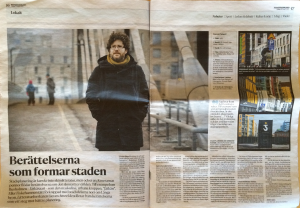Today teaching a guest lecture at Aalto University on narratives in Urban Studies and Planning. Quotes of the day:
“… not only do narratives matter in planning, but their centrality is not sufficiently examined or taught, and their premises and implicit causal links are not adequately subjected to scrutiny.” (Isserman & Markusen, 2013)
“Finally, we should extract from other fields of study what is useful about the concept of narrative and the use of storytelling as a presentation and teaching device. We were shocked to find so little concerted planning literature acknowledging the power of narratives and their ubiquitous (but implicit) presence in planning discourse and practice. … Will planning finally pay attention to its own rhetoric? Will regional science move beyond tools to imagine and conscientiously construct narratives?” (Isserman & Markusen, 2013)
Isserman, Noah, & Markusen, Ann. (2013). “Shaping the Future through Narrative The Third Sector, Arts and Culture.” International Regional Science Review, 36(1), 115-136.




